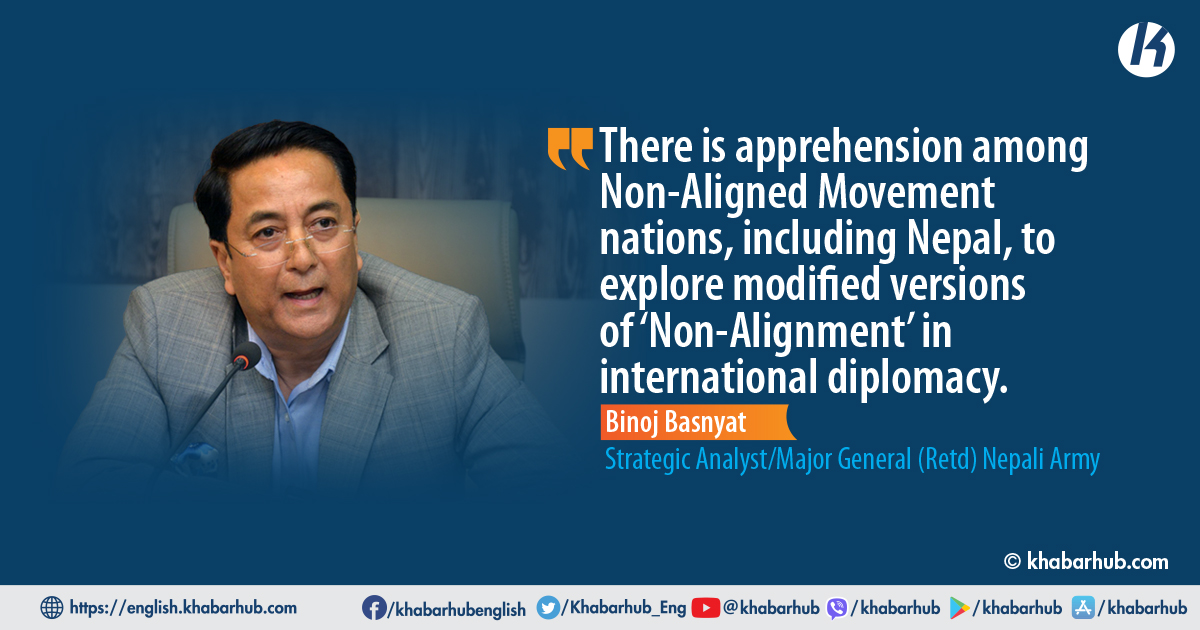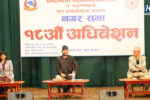Fifteenth Brazil, Russia, India, China, South Africa (BRICS) shaped the bedrock for both the Group of Twenty nations (G20) and the Group of Seventy-Seven nations (G77) summit, as well as a political platform for the 78th United Nations General Assembly (UNGA).
Additionally, it played a role in the third G77 South Summit in Kampala, scheduled for January 2024 after 19 years, with India being a member of all three.
While BRICS summit, though countries like China and India, are divided, on the other hand, is seeking an alternative world order with an expansion of six countries, while 40 nations are awaiting membership, sending strong signals that the post-World War II order has ended and that the international order is ineffective and an innovative one is indispensable.
This was clearly articulated in almost all the important speeches at the UNGA summit, reflecting resentment toward the efficiency and effectiveness of the global governance system, the UN.
The Global North comprises developed countries that parallel the Western World and includes Australia, Europe, Israel, Japan, New Zealand, Northern America, and South Korea.
The month of September 2023, marked the start of summits with the eighteenth G20 summit in New Delhi, celebrated with rejoicing.
The G77 summit followed in Havana, with optimism, involving 100 nations and 30 Heads of State and Government from Africa, Asia, and Latin America. Notably, member countries collectively represent over 80 percent of the world’s population and include two-thirds of the UN’s members.
The UN Secretary-General attended both summits. The Group of Seven countries (G7) and many North Atlantic Treaty Organization (NATO) countries were part of the G20.
While India is advocating for 19 countries and two Unions within G20 to enhance North-South Cooperation (NSC), China plays a considerable role in the 134-nation G77 plus China, symbolizing China plus South-South Cooperation (SSC). Commonalities include global connectivity and a global supply chain for economic transformation and expansion.
In a global perspective, the North-South divide, or Global North (GN) and Global South (GS), is based on socio-economic and political factors.
When considering the GS, it refers to a loose coalition of developing nations that share common interests and challenges, mainly in Africa, Asia (excluding Israel, Japan, South Korea), the Caribbean, Latin America, and Oceania (excluding Australia and New Zealand).
This coalition emphasizes representation, collective bargaining power, and cooperation on various global issues.
The bloc comprises low-income countries with dense populations, poor infrastructure, and, in many cases, cultural marginalization.
It involves sharing knowledge, experience, training, technology transfer, skills, expertise, financial and monetary cooperation, as well as in-kind contributions and resources, to achieve goals through concerted efforts among developed and developing countries in NSC and between developing countries in SSC.
These countries are either newly industrialized or in the process of industrialization, and some were former colonies.
The Eastern World seeks to challenge the dominance of traditional great powers and wield greater influence in shaping international norms, policies, and institutions.
The Global North comprises developed countries that parallel the Western World and includes Australia, Europe, Israel, Japan, New Zealand, Northern America, and South Korea.
This terminology replaces the previous categories of First World, Second World, and Third World countries that emerged during the Cold War.
When discussing cooperation in the upcoming geopolitical landscape, it revolves around SSC and NSC. NSC and SSC entail cooperation in various domains, including political, economic, social, cultural, environmental, and technical aspects.
It involves sharing knowledge, experience, training, technology transfer, skills, expertise, financial and monetary cooperation, as well as in-kind contributions and resources, to achieve goals through concerted efforts among developed and developing countries in NSC and between developing countries in SSC.
This has led to increased South-South trade, flows of foreign direct investment, regional integration, technology transfers, sharing of solutions, and expert exchanges.
The preference for visionary cooperation and global governance indicates potential shifts in international diplomacy toward a new global order.
Examples include India’s initiative in the G20 summit with the India-Middle East-Europe Economic Corridor (IMEEC), a project developed under the G7 nations’ Partnership for Global Infrastructure Investment initiative (PGII).
On September 26, the Chinese government also released a new white paper titled “A Global Community of Shared Future: China’s Proposal and Actions” (GCSF), which includes the Global Development Initiative, Global Security Initiative, and Global Culture Initiative, with the Belt and Road Initiative (BRI) as a subdivision.
The 2nd Pacific Islands Forum’s (PIF) summit at the White House on September 25-26, hosted by President Biden to enhance cooperation to address Pacific priorities and achieve the vision of the first-ever US Pacific Strategy released in 2022, which focuses on and is guided by the 2050 Strategy for the Blue Pacific Continent, and to support the regional architecture led by the PIF, represents NSC.
However, it is important to note that individual countries within the G77 have varied objectives and priorities, so not all member states may align with China’s positions on every issue.
Nonetheless, the G77 provides China with a significant platform to collaborate with other developing countries, amplify its voice, and promote its own agenda on the global stage.
The G77+China summit concluded with an appeal for a revamped global order by empowering the GS in international governance, affirming the influential role in global affairs within the UN system.
As China gains political influence within the G77, the US may feel compelled to counterbalance its growing clout, potentially exacerbating tensions and great power rivalry, despite G7 and G20 collaboration and partnership with ‘India’s role as a bridge.’
Secondly, highlighting the revival of the New International Economic Order (NIEO). Thirdly, promoting science, technology, and innovation by declaring 16 September as the annual “Day of Science, Technology, and Innovation in the South.”
Lastly, advocating for a coordinated approach to global financing governance with increased representation for GS countries.
Conclusion
In 2023, the year of summits began with a Virtual Voice of the GS Summit, G7, BRICS, G20, and G77, along with other mini-lateral diplomacy like the Quadrilateral Security Dialogue (QUAD) and the Australia-UK-US security pact (AUKUS).
All of these events took place before the 78th UNGA, which marked the end of the year of summits, with China and India playing pivotal roles in global diplomacy.
Biden was the only Head of State or Government present among the five permanent members of the UN Security Council, and Prime Minister Modi’s absence at the UN headquarters and Havana raised geopolitical concerns.
Although China wields substantial influence in the G77, the absence of both Xi and Modi suggests unease among partners. Jaishankar stated in the UNGA that “structural inequities and uneven development have imposed a burden on the GS,” and “we began the G20 Presidency by convening the ‘Voice of the GS’ Summit.”
He emphasized India’s commitment to representing the voices of 125 nations and the entire African GS, assisting NSC “to bridge divides, dismantle barriers, and sow seeds of collaboration that nourish a world where unity prevails over discord and where shared destiny eclipses isolation.”
However, actions are equally important in reevaluating the NSC. This aligns with the North-South model fostered by economics Professor Ronald in developmental economics, describing the progress of less developed GS or ‘periphery’ economies collaborating via trade with developed GN or ‘core’ economies.
It also rationalizes the ‘dependency theory’ faced by most GS, particularly landlocked Developing Countries (LLDC). Three geopolitical impressions must be watched closely.
First, ‘Power redistribution’: The emergence of the GS represents a power shift from West to East, as developing nations challenge historical power structures.
China and India’s inclusion in the bloc reflects their aspirations for more significant roles in global governance.
Second, ‘Multipolarity’: The GS contributes to a multipolar world with diverse centers of power, challenging the traditional bipolar or unipolar world order.
Third, ‘Geopolitical competition’: The rise of the GS intensifies competition among great powers.
As China and India assert themselves, traditional powers like the US face new challenges to their dominance, potentially leading to conflicts and rivalries.
The influence on great power rivalry, particularly in China-US dynamics, cannot be underestimated.
China’s GCSF vision, with its rejection of ‘bloc politics,’ ‘alliances,’ ‘Cold War’ mentality, and American unipolarity, along with India’s initiation in the G20 with IMEEC as part of PGII, are significant diplomatic gestures indicating the continuation of multilateralism and the preference for minilateralism in global geopolitics and diplomacy.
The GS, especially with China’s active role, adds a new dimension to the rivalry between China and the US, as well as Indo-Sino cooperation, competition, and confrontation.
As China gains political influence within the G77, the US may feel compelled to counterbalance its growing clout, potentially exacerbating tensions and great power rivalry, despite G7 and G20 collaboration and partnership with ‘India’s role as a bridge.’
India, through its G20 membership and active engagement, can act as a connector between the GN (west) and the GS (east), reducing great power rivalries and contributing to global stability and governance.
Recognizing that intergovernmental structures were organized post-World War II, there is a need for adjustments to the global system while maintaining multilateralism.
Secondly, addressing the North-South divide by fostering collaboration when the NIEO was more talk than action.
There is a growing need for influence from “middle powers,” with India, originally from the GS, being the preferred choice of the West to play a pivotal role in international diplomacy.
China, on one hand, and the US and Allies, on the other hand, are attempting to court the GS, prioritizing Saudi Arabia in both Johannesburg and New Delhi.
Enhanced partnership between the GN and the GS emerges amid shifts toward ‘de-Westernization’ and ‘de-dollarization’ in GN countries, aiming to accommodate new powers like the Beijing-Moscow-Pyongyang axis.
Substantial harmonization is emphasized between advanced declining economies and rising economies and middle powers.
China’s GCSF vision, with its rejection of ‘bloc politics,’ ‘alliances,’ ‘Cold War’ mentality, and American unipolarity, along with India’s initiation in the G20 with IMEEC as part of PGII, are significant diplomatic gestures indicating the continuation of multilateralism and the preference for minilateralism in global geopolitics and diplomacy.
These serve as roadmaps for global powers, emerging powers, and rising powers to shape their own foreign policy visions for their regions and the world.
There is apprehension among Non-Aligned Movement nations, including Nepal, to explore modified versions of ‘Non-Alignment’ in international diplomacy.
(The author is a Strategic Analyst, Major General (Retd) of the Nepali Army, and is associated with Rangsit University, Thailand.)
Views expressed in this opinion are the writer’s and do not necessarily reflect the editorial stance of Khabarhub









Comment